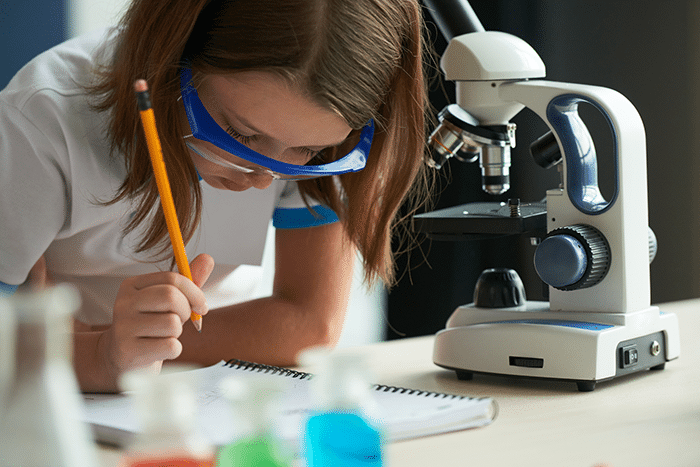
Re-Organizing the Lab Structure
Classroom A: Imagine being a student learning about constant velocity, a concept that is brand new to you. You have some general understanding of words like speed and direction, but the topic of velocity comes with new math, facts, and vocabulary. You spend a class period taking notes and watching a video on the topic, but at the end of the day need more practice with the topic. The next day, your teacher gives you a lab with pre-designed steps for you to complete. There are a few analysis questions after the experiment is finished that you answer with your lab members.
Classroom B: In the science classroom next door, they are also studying constant velocity. In this classroom, on day 1, the teacher poses the question, “How do you calculate constant velocity?” Students, of course, have not learned this term yet, but they are given a stopwatch, a wind-up car, a meter stick, and some tape. The teacher facilitates a discussion to establish that the car will move at a constant rate. They will then design the steps of the experiment as a class that will allow them to measure the change in distance and time of the car. Students carry out these steps in groups of 4 and answer analysis questions provided by the teacher. The next day, the teacher introduces the formula for velocity, and students use the data from the day before to practice their calculations. Finally, students individually write a conclusion that answers the question posed on day 1.
There are differences in how each teacher introduced the topic of constant velocity to students, and we will use The Scientific Investigation Framework to explain these differences.
What is the Lab Investigation Framework?
If the basis of proper scientific investigation is discovering the answer to a question, we must, in fact, begin with a question. Answering this question in a classroom setting requires a structure that will allow students to hone in on content goals while conducting an experiment. The Scientific Investigation Framework is this structure. It consists of three main components: Pre-Lab, Lab, and Post-Lab. Each of these three components serves as a guide that allows students to mirror what a scientist would do to discover new information. They start with a question and end with an answer while guiding their own discovery.
Pre-Lab
Pre-Lab activities will allow students to gain context to new information and prepare them for investigation. This component of the Lab will not include directly teaching large amounts of information. In classroom B above, the teacher held a class discussion to establish that the car’s rate would not change. This fact was necessary to understand constant velocity. They also established the procedure as a group because the steps were somewhat simple and would allow students to collect information necessary for the post-lab activities.
Lab
The Lab itself is where students will complete the scientific method and discover the answer to the question posed. In classroom B the experiment itself is the result of student design, and here they will carry out what they’ve designed. This step involves student groups answering a series of analysis questions once data is collected, but this is not the end of the process.
Post-Lab
Post-Lab Activities allow students to apply their knowledge to a new situation. In classroom B, they used actual data from each group to practice the formula for velocity. The engagement with the formula is quite different from classroom A, which copied the definition and formula on day 1. Students go on to individually write conclusions on “how do you calculate velocity.” In essence, they are creating their own notes from their own discovery.
An Argument for the Scientific Investigation Framework
The comparison of classrooms A and B highlights how the structures in which students are exposed to new content matter. If a teacher creates a framework that models the natural scientific process, the students become scientists discovering the answers to questions related to their content goals. Skills and facts go hand in hand. Teachers don’t necessarily need to spend more time planning but simply rearrange how content is presented.
With consistent practice in this framework, students evolve and become accustomed to the process, thus increasing their capacity to think, engage and discover.
Use the table below (also found in the downloadable resource below) to keep the goals of each component of the Scientific Investigation Framework in mind when planning your next Lab.





